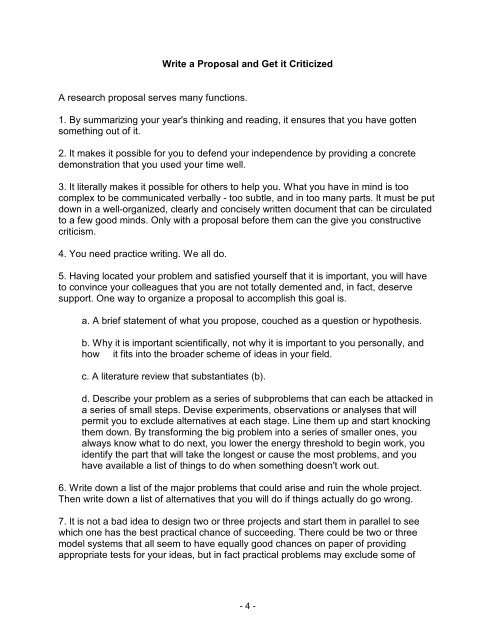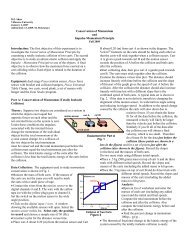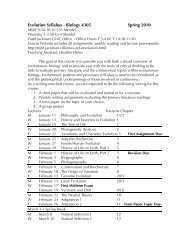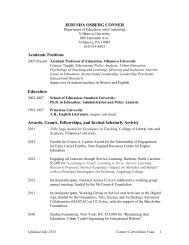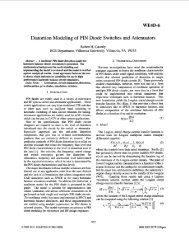SOME MODEST ADVICE FOR GRADUATE STUDENTS Stephen C ...
SOME MODEST ADVICE FOR GRADUATE STUDENTS Stephen C ...
SOME MODEST ADVICE FOR GRADUATE STUDENTS Stephen C ...
You also want an ePaper? Increase the reach of your titles
YUMPU automatically turns print PDFs into web optimized ePapers that Google loves.
Write a Proposal and Get it Criticized<br />
A research proposal serves many functions.<br />
1. By summarizing your year's thinking and reading, it ensures that you have gotten<br />
something out of it.<br />
2. It makes it possible for you to defend your independence by providing a concrete<br />
demonstration that you used your time well.<br />
3. It literally makes it possible for others to help you. What you have in mind is too<br />
complex to be communicated verbally - too subtle, and in too many parts. It must be put<br />
down in a well-organized, clearly and concisely written document that can be circulated<br />
to a few good minds. Only with a proposal before them can the give you constructive<br />
criticism.<br />
4. You need practice writing. We all do.<br />
5. Having located your problem and satisfied yourself that it is important, you will have<br />
to convince your colleagues that you are not totally demented and, in fact, deserve<br />
support. One way to organize a proposal to accomplish this goal is.<br />
a. A brief statement of what you propose, couched as a question or hypothesis.<br />
b. Why it is important scientifically, not why it is important to you personally, and<br />
how it fits into the broader scheme of ideas in your field.<br />
c. A literature review that substantiates (b).<br />
d. Describe your problem as a series of subproblems that can each be attacked in<br />
a series of small steps. Devise experiments, observations or analyses that will<br />
permit you to exclude alternatives at each stage. Line them up and start knocking<br />
them down. By transforming the big problem into a series of smaller ones, you<br />
always know what to do next, you lower the energy threshold to begin work, you<br />
identify the part that will take the longest or cause the most problems, and you<br />
have available a list of things to do when something doesn't work out.<br />
6. Write down a list of the major problems that could arise and ruin the whole project.<br />
Then write down a list of alternatives that you will do if things actually do go wrong.<br />
7. It is not a bad idea to design two or three projects and start them in parallel to see<br />
which one has the best practical chance of succeeding. There could be two or three<br />
model systems that all seem to have equally good chances on paper of providing<br />
appropriate tests for your ideas, but in fact practical problems may exclude some of<br />
- 4 -


